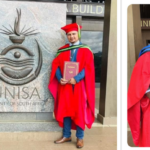PRESS RELEASE: Education for girls is crucial to end child marriage but must be part of a broader effort, urge NGOs
Published on April 22, 2013 at 8:02 AM by FACE OF MALAWI
Joint press release by World Vision, the World YWCA, as well as CARE USA, International Center for Research on Women and the International Women’s Health Coalition representing the Girls Not Brides USA partnership.
Getting the world’s 32 million out-of-school girls back into education will be crucial to end child marriage, state a group of non-governmental organisations (NGOs) on the eve of a high level roundtable on child marriage, but emphasise that there is no single solution to end a practice that denies an estimated 14 million girls a year their rights to health, education, choice and security.
Finance and education ministers from eight developing countries will gather in Washington DC this week for meetings at the World Bank on how to accelerate progress towards delivering quality education for children and youth by 2015. The meetings will be co-hosted by President of the World Bank Jim Yong Kim, UN Secretary-General Ban Ki-moon, and United Nations Special Envoy for Global Education Gordon Brown.
Members of Girls Not Brides: The Global Partnership to End Child Marriage invited to a parallel roundtable discussion on how to address child marriage welcome this week’s meetings and call upon the education community to recognise that progress on global education goals cannot be made without tackling child marriage.
Girls Not Brides members invited to the child marriage roundtable include World Vision, the World YWCA, as well as CARE USA, International Center for Research on Women, and the International Women’s Health Coalition representing the Girls Not Brides USA Partnership.
To end child marriage, education must be accessible, good quality, safe and girl-friendly
One of the clearest indications of our success or failure on international development goals will be the number of girls who have been married as children. The reality is that when girls are married young, their education and other opportunities to live a safe, healthy and empowered life, come to an end.
Girls Not Brides members invited to the child marriage roundtable emphasise that keeping girls in school is critical to delaying the age of marriage. However, if education is to be a successful tool to help girls avoid early marriage, they need to have access to quality education and schools that are safe and girl-friendly. This must be available at the critical transition from primary to secondary schooling, a time when school dropout rates for girls escalate.
Education initiatives that help girls to avoid child marriage must include awareness-raising campaigns for parents and community leaders on the benefits of girls’ education, scholarship programmes for girls, female mentors and teachers, equipping schools with sex-segregated toilets and providing training for teachers on how to ensure a safe environment for all students.
The NGOs also warn education ministers not to overlook the 400 million girls and women who have already been married as children, and who have often been forced to drop out of school, unable to complete their education. Governments should ensure re-integration of married girls, who may be mothers, into formal schooling and other non-formal educational opportunities.
Education alone is not enough to end child marriage. Cooperation is needed across government ministries and with civil society to end the practice.
“We know that child marriage is holding back progress in girls’ education and we welcome the education community’s growing interest in tackling this issue,” says Sarah Kambou, President of the International Center for Research on Women (ICRW). “We also know that the persistence of child marriage hinders our efforts to end gender inequality, poverty, hunger, HIV/AIDS, maternal and new-born deaths. We’ll struggle to make progress in all of these areas until we commit to addressing the harmful, cross-cutting effects of the practice.”
“To achieve long-term change on issues like child marriage,” adds Lakshmi Sundaram, Global Coordinator, Girls Not Brides, “we need to ensure that large-scale structural efforts aimed at other goals such as health and poverty reduction, as well as education, are making the connection with child marriage prevention.”
The NGOs invited to the child marriage roundtable will urge the education and finance ministers to cooperate with ministries across their government, including ministries of health, justice, and social affairs, to make sure that ending child marriage is integrated throughout their social programming. They also urge governments to enforce minimum age of marriage laws and to implement legal, policy, administrative and other measures to end child, early and forced marriage in a single generation.
The NGOs will urge participating governments to partner with the civil society organisations working directly with adolescent girls, men and boys, religious leaders and their wider communities to scale up this work across regions and countries.
“Changing cultural practices and attitudes that allow child marriage to continue takes years, and requires a deep and lasting commitment to work with families and communities to make change happen,” says Denise Allen, World Vision International.
“By reaching out to communities and empowering the girls vulnerable to child marriage, we can begin to counter the idea that girls are somehow of lesser value,” says Nyaradzayi Gumbonzvanda, General Secretary of the World YWCA. “It will take time but we must address the root causes of child, early and forced marriage, including poverty and gender inequality.”
Substantial support needed from donor governments
Donor governments and institutions should also play an active role in efforts to end child marriage.
“Child marriage is not a problem that just affects the eight countries represented at this meeting. It is a global problem,” states Jennifer Redner of the International Women’s Health Coalition and co-chair of Girls Not Brides USA. “In countries where it is practiced, child marriage undermines efforts to alleviate poverty, reduce maternal and infant deaths, and tackle violence against women and girls. Donors, national governments, multilateral agencies and the private sector need to commit substantial resources to prevent and respond to child marriage.”
Child marriage must feature in post-2015 development framework
The needs and rights of adolescent girls were largely unaddressed in the Millennium Development Goals (MDGs), argue the group of NGOs. To rectify this in the new development framework currently under discussion, participating governments at the meeting are called on to advocate for rates of child marriage to be included as an indicator of the welfare of adolescent girls.
“There are few clearer indicators of how adolescent girls are faring in a country than its rate of child marriage,” says Lakshmi Sundaram, Global Coordinator, Girls Not Brides. “By ensuring that ending child marriage is included in the new development goals, we can keep track of how well we are all doing in ensuring that adolescent girls can thrive.”
MEDIA CONTACTS:
For media enquiries and interview requests please contact:
Laura Dickinson, Girls Not Brides: media@GirlsNotBrides.org


